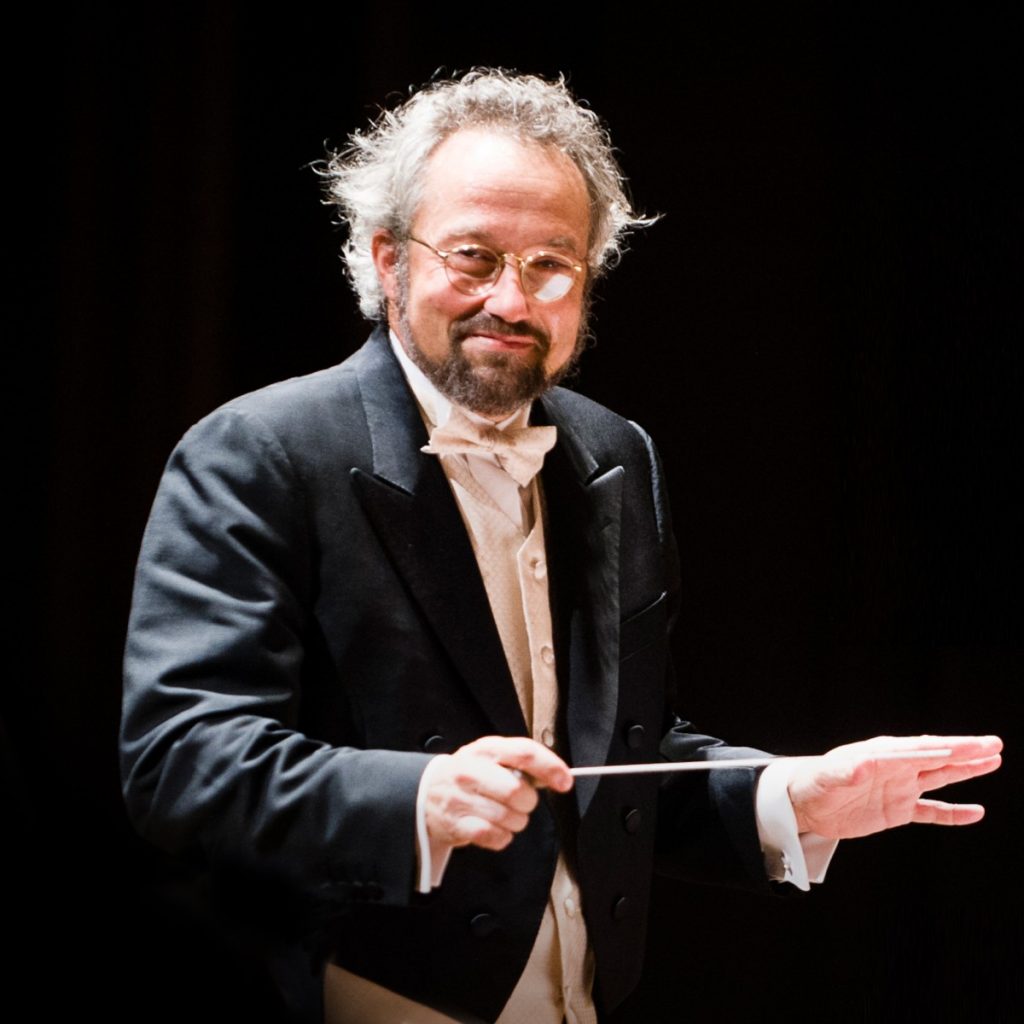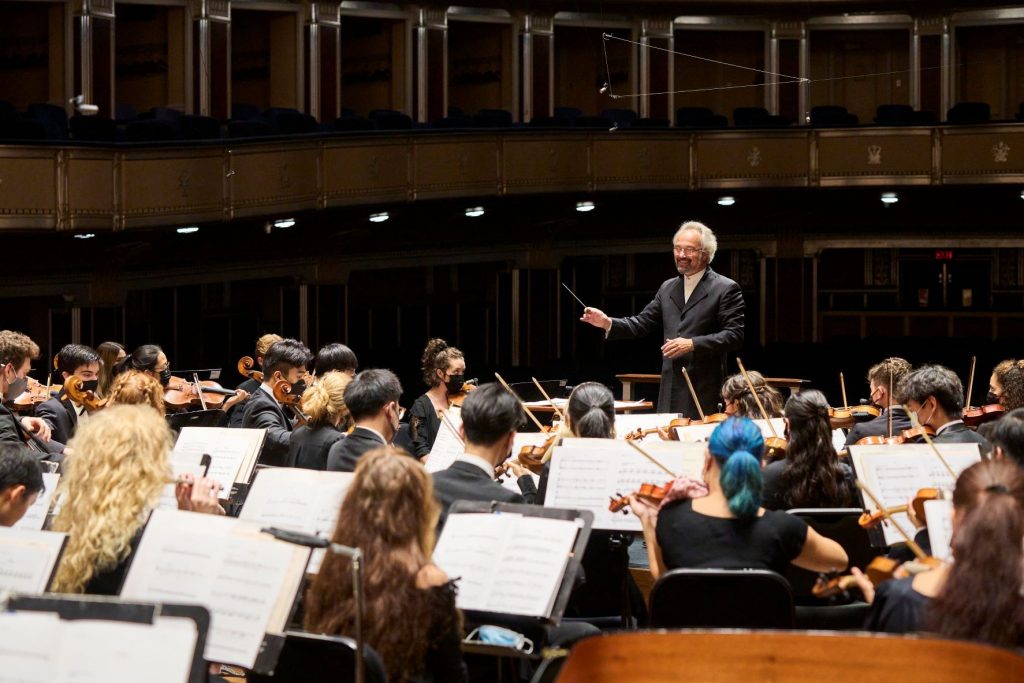by Mike Telin

The occasion also marks the one-year anniversary of Kalmar’s debut as Principal Conductor and Director of Orchestral Studies at CIM. I caught up with the thoughtful, friendly maestro by telephone and began our conversation by congratulating him on his anniversary.
Carlos Kalmar: It’s interesting that you say that, because for me, this is not my one-year anniversary. Last year was a transitional year in which we did a lot of planning and a lot of thinking in terms of the [orchestral studies] program that I constructed with an entire team. So this is now the first year, and when we talk a year from now you can say hey, let’s celebrate a year.
Mike Telin: Is this your first academic appointment?
CK: Yes, and it’s interesting because during my long dedication to music, I sometimes thought about academia. When I was young I thought that I should wait until I had something to say, which was my way of saying that it’s not the right time — there are some wonderful young professors and teachers everywhere who definitely have more than one thing to say.
But I have gathered some experience and now I am here, and with the help of a panel that I created, I restructured the entire program so it is very different from what it was before. I spent my career building orchestras in the sense that I got to a place and my goal was to leave an orchestra that sounded better than it did before I arrived.
And now I am confronted with two orchestras that are constantly in flux, because the students that I work with now, in four years, are no longer going to be there.
I am also working with the faculty who are fantastic teachers, many of whom are also members of The Cleveland Orchestra. So I do my best to open a dialogue with the faculty. I always find an open ear whether it’s asking for a little bit of help with a student, or getting very valuable advice about who should play first flute, second oboe, or third bassoon. Stuff like that.
All of that is a big adjustment, but here I am keen on making a successful orchestra program in a student environment. I need all the help I can get.
MT: How do you go about choosing the pieces students should learn as opposed to the ones that are fun to learn?
CK: I would say this. My aim is to give the students a well-rounded education with no gaps in it. For me it is about styles, not about pieces. The only thing is to be sure that a piece has not been done in the past three years.
My philosophy is that if you want to know how to play Mr. Tchaikovsky or Mr. Brahms, pick an important piece by those composers. It is not necessary for it to be Brahms No. 2 or Tchaikovsky No. 4 — there are alternatives.
I like to offer them a variety of things that challenge them, and students like to be challenged. I offer some pieces that they might know very well because they are the “warhorses,” and some that they might not know but will enjoy learning because of what the piece does.
MT: You have put together three amazing programs this season — I cannot wait to hear the Messiaen and Bruckner in November.
CK: The construction of that concert was secured by me talking to faculty. Yes, this is a program that I wanted, but I went to some faculty and told them what I was planning — “do you have the students who can do this?” Because that puts Bruckner 4, which is brass-heavy, next to Messiaen L’Ascension, which has a first movement that is severely brass-heavy. But if you believe that Bruckner is constantly building cathedrals with his music, and much of Messiaen’s music is religiously infused, the link between them is very interesting.
MT: And you essentially had two organists writing for symphony orchestra.
CK: Yes, and it is interesting how that influences the way they write.
MT: To somewhat change topics, you recently inaugurated the new collaboration with The Cleveland Orchestra which enables the CIM Orchestra to perform more often at Severance.
CK: Yes, and it could be argued that this has been years in the making. It’s not that I was the driving force in the venture — we have fantastic people at CIM like the president and the provost, and as I mentioned many faculty are members of TCO.
But I do know there are conductors who are saying, ‘Hey, CIM is playing seven times this season alone in what is arguably the best hall in the United States.’ And that is nice.
MT: Well, congratulations.
CK: Thank you. Things are going in the right direction.
Published on ClevelandClassical.com October 5, 2022.
Click here for a printable copy of this article




